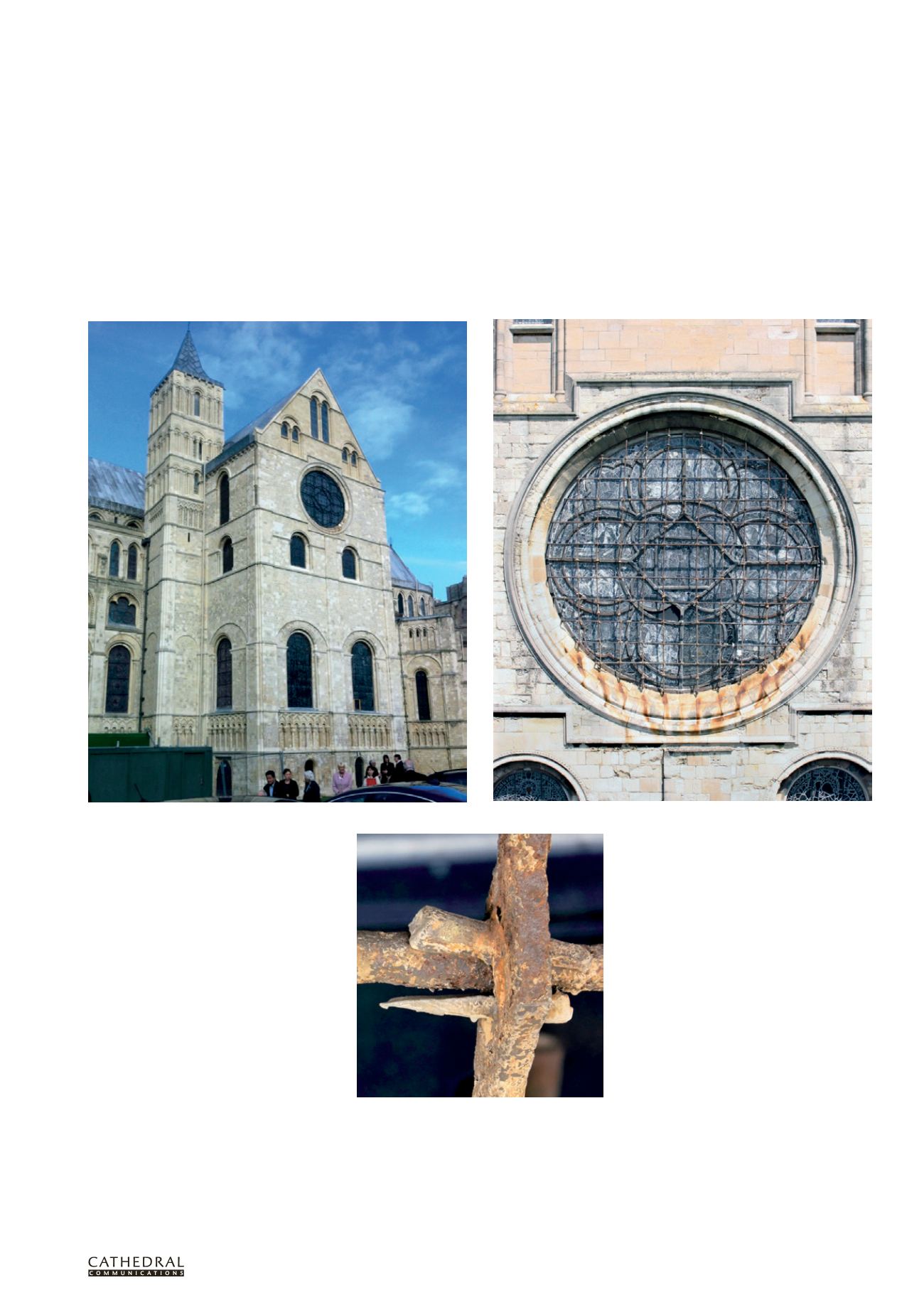
T W E N T Y F I R S T E D I T I O N
T H E B U I L D I N G C O N S E R VAT I O N D I R E C T O R Y 2 0 1 4
1 1 9
3.3
STRUCTURE & FABRIC :
ME TAL,
WOOD & GLASS
THE SOUTH OCULUS,
CANTERBURY CATHEDRAL
BRIAN HALL
The south transept of Canterbury Cathedral and its oculus window before conservation
Copper wedges in a joint showing how little of the
material has been lost to corrosion despite being over
800 years old
M
ETALWORK IS
usually painted for a
very good reason: paints and coatings
both protect metal from corrosion
and provide a decorative finish.
When selecting a protective coating
for metals we are faced with a multitude of
choices: paints based on synthetic or natural
binders (such as alkyds, acrylics, vinyl-acrylics,
vinyl acetate/ethylene (VAE), polyurethanes,
polyesters, melamine resins, epoxies or oils),
hot and cold zinc spray coatings, electroplating,
and waxes.
In addition, surface preparation options
for historic metalwork are also numerous
and equally diverse, so deciding on a suitable
treatment is never as straightforward as it may
appear to be at first.
The south oculus window at Canterbury
Cathedral is a case in point.
Oculi are large Romanesque circular
windows that are divided into segments by
iron armatures and not stone tracery as in
the case of rose windows which replaced
the oculi after the mid-13th century.
Canterbury Cathedral has two oculi, one in
each of the two transepts, but only the south
oculus retains its ironwork complete.
With a diameter of almost 4.5m the south
oculus is an internationally important early
ferramenta (iron framework) structure which
is believed to date from between 1178 and 1180.
Current research shows it to be unique in that
it has a contemporary secondary external
frame which offers a technological solution
to supporting large ecclesiastical windows
prior to the use of stone tracery. The usual
ferramenta which were used to support earlier,
smaller, windows were inadequate on their own
where such a large window was concerned,
so additional support was provided by an in
situ secondary, external iron grille, tied to the
primary framework at regular intervals. The
secondary grille performs the same function
as a space frame in contemporary structures,
providing support and rigidity while still
keeping the structure relatively lightweight.
The ferramenta had survived for 800 years
with little intervention and was in a stable
condition. It was made entirely in charcoal
iron which has a reputation for longevity and
corrosion resistance. A safety assessment was


